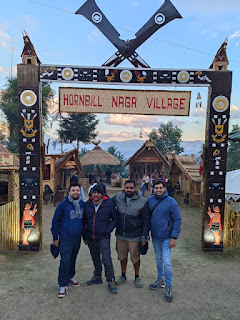India is the land of the Himalayas, the country of spirituality, and the place where four of the world's major religions were born. It is also a country that has a lot to offer in terms of nature and culture, that can be rivaled by few other countries in the world.
The North-east region of India is unique in many senses: not as crowded as other parts of India, largely unexplored barring a few places, and one of the most off-beaten destinations. The region offers pristine views and some of the most beautiful landscapes in India- from lush green tea plantations to snow-capped foothills of the mighty Himalayas. And of course, the never-ending streams and falls.
The planning
Four of us - ex-colleagues turned friends decided we'll go someplace in the East this winter. Bhutan and Arunachal Pradesh were the two contenders, Arunachal won for budget reasons (we learned Bhutan has turned very pricey for foreign tourists, especially after Covid). One of our friends in the group is from Guwahati. He suggested that there is this "Hornbill festival" that happens in Nagaland from Dec 1 to 10 every year - we can witness that too if the time matches. This (Nagaland, Guwahati, Arunachal) formed the skeleton of the trip in which Arunachal was the core.
I'll briefly highlight the important places covered on the trip.
Guwahati, Assam
The Kaziranga National Park is one of the most well-known destinations in Assam. The park is home to two-thirds of the world’s population of one-horned rhinoceros. We took both an elephant safari (highly recommended) and a jeep safari.
The Kamakhya temple is located in the heart of the city and is dedicated to Goddess Kamakhya. It is one of the 51 Shakti Peeta spread across the sub-continent, which are shrines that represent the goddess’s body parts. The temple has been an important pilgrimage site for centuries and is visited by both Hindus and Buddhists alike.
It's one of the few prominent temples where tantric practices are carried on to date. It was a different kind of experience for most of us as this was unlike most of the temples we had been to.
Nagaland
Nagaland is a very small state in the northeast, and it is also one of the most exotic places in India. The people are mostly tribal, and the Christian missionaries have converted them a century ago to Christianity, and the vast majority practice Baptism. English is the official language.
Apart from the natural beauty, Nagaland is also known for its tribal festival called Hornbill Festival which takes place every year from December 1 to 10 in the capital city of Kohima is an annual festival that celebrates the culture, tradition, and history of Nagaland. The festival lasts for ten days, and it includes different events such as arts, crafts, music, sports competitions, etc., which showcase the colorful traditions of Nagaland to outsiders too.
 |
| A prototype Naga village representing one of the tribes |
You will have a tough time if you are a vegetarian as the options are very scarce (even for non-vegetarians the options are mostly to do with pork, chicken, and beef). Since we had only a night and two days scheduled for Nagaland, we couldn't cover other places of interest like Dzüko Valley which would be a great place to visit if you have one day extra. Entering Nagaland requires an inter-state permit which is to be taken beforehand. This is the same case with Arunachal Pradesh too.




No comments:
Post a Comment